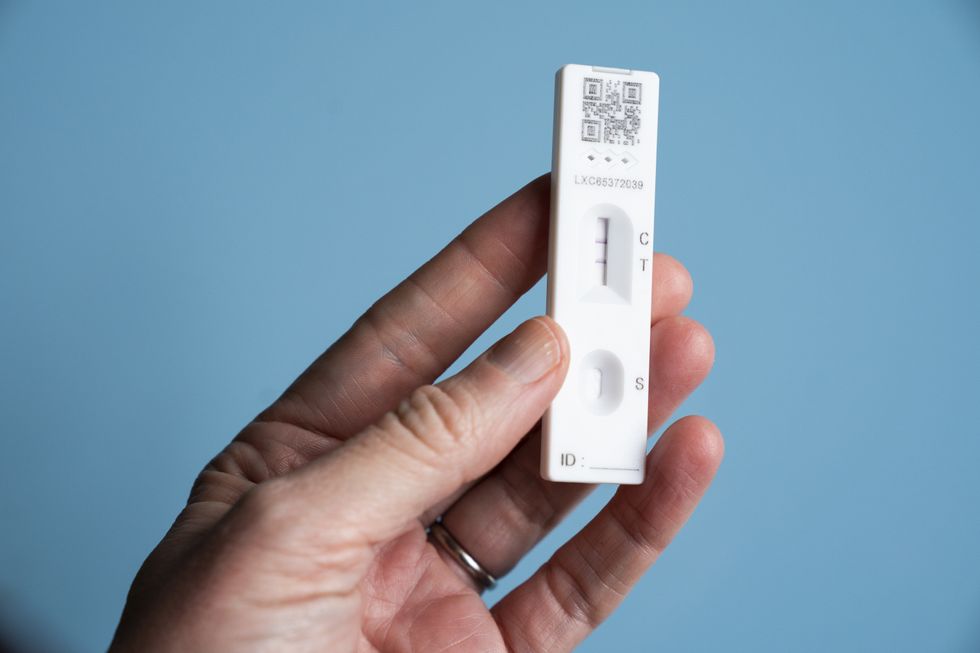Covid-19 infection rate UNCERTAINTY 'possibly' due to postal strikes

Covid-19 infections are thought to have risen in England and Northern Ireland in late November.
Jane Barlow

The latest estimates of Covid-19 infections in the UK are likely to have been affected by the current postal strikes across the country, experts said.
Infections are thought to have risen in England and Northern Ireland in late November, while the trend is unclear in Scotland and Wales.
But there is greater uncertainty than usual in the estimates, as well as a longer time lag in reporting the data, according to the Office for National Statistics (ONS).
This is due to a low number of Covid-19 test results received by the ONS, “possibly” as a result of industrial action by postal workers.
“For all UK countries, some results may have more uncertainty and be subject to change as more test results are received for this period”, the ONS said.
The total number of people in private households in the UK testing positive for coronavirus stood at 1.1 million across the period November 17 to 26.
This is up from 972,400 in the week to November 15.
During the previous wave of infections in early autumn, the total peaked at just over two million in mid-October.
This was well below the peaks seen earlier in the year, when infections climbed to nearly four million in July and just under five million in March.
Royal Mail workers are carrying out strikes throughout December.
Andrew Milligan
Michelle Bowen, ONS head of health surveillance, said: “Infections have continued to increase across England, increased in Northern Ireland for the first time in a month and the trend in all other UK countries is now uncertain.
“Across English regions and ages, it is a mixed picture of uncertainty and increases in infection rates, and we will continue to monitor the data carefully over the winter months.”
The ONS infection survey is the most reliable measure of the prevalence of coronavirus and is based on a sample of swab tests from households across the UK.
But because the amount of test results received by the ONS is lower than usual, the new estimates cover different periods in the four nations and need to be treated with caution.
The number of people testing positive for coronavirus in England in the seven days to November 26 was 941,700, or around one in 60 people, up from 873,200 in the week to November 21, which was also one in 60.
In Northern Ireland, an estimated 36,700 people had Covid-19 in the seven days to November 23, or one in 50, up from 28,900 in the week to November 21, or one in 65.
Scotland is likely to have had 88,500 people with coronavirus in the week to November 24, or one in 60, compared with 91,100 in the week to November 21, which was again one in 60.
In Wales, 43,400 people were estimated to have Covid-19 in the week to November 24, or one in 70, compared with 39,600 in the week to November 22, or one in 75.
Infection rates in England in late November were estimated to be highest among secondary school-age children, with 2.2% likely to have the virus – the equivalent of one in 60.
More recent figures suggest the number of people in hospital in England with Covid-19 is on an upward trend, with 5,501 recorded on December 7, a jump of 11% on the previous week and the highest since November 10.
Admission rates in England stood at 5.5 per 100,000 people in the seven days to December 4, up week-on-week from 4.9.
Dr Jamie Lopez Bernal, consultant epidemiologist for immunisation at the UK Health Security Agency (UKHSA), said: “During the winter, we would expect to see a rise in Covid activity and other winter viruses as people are mixing more indoors again.
“Covid hospitalisations are highest in the oldest age groups, so it is particularly important that everyone who is eligible continues to come forward to accept their booster jab.
“While Covid-19 and flu can be mild infections for many, we must not forget that they can cause severe illness or even death for those most vulnerable in our communities.”
Around four in five people (80.6%) aged 80 and over in England have received a fresh booster dose of Covid-19 vaccine, along with a similar proportion of 75 to 79-year-olds (81.0%) and 70 to 74-year-olds (77.8%), UKHSA data shows.
All people aged 50 and over are able to book an appointment for a booster if they had their last jab at least three months ago.
Doses are also available for frontline health and care workers, pregnant women and people with weakened immune systems.